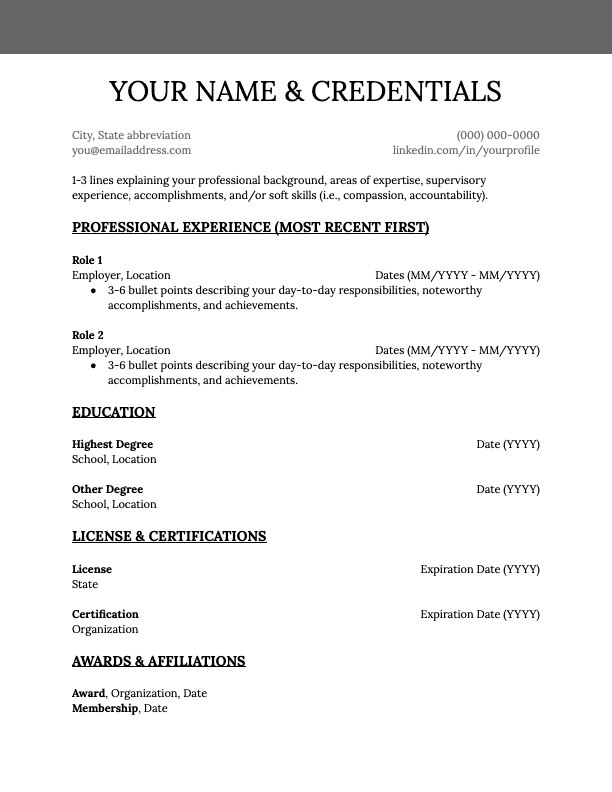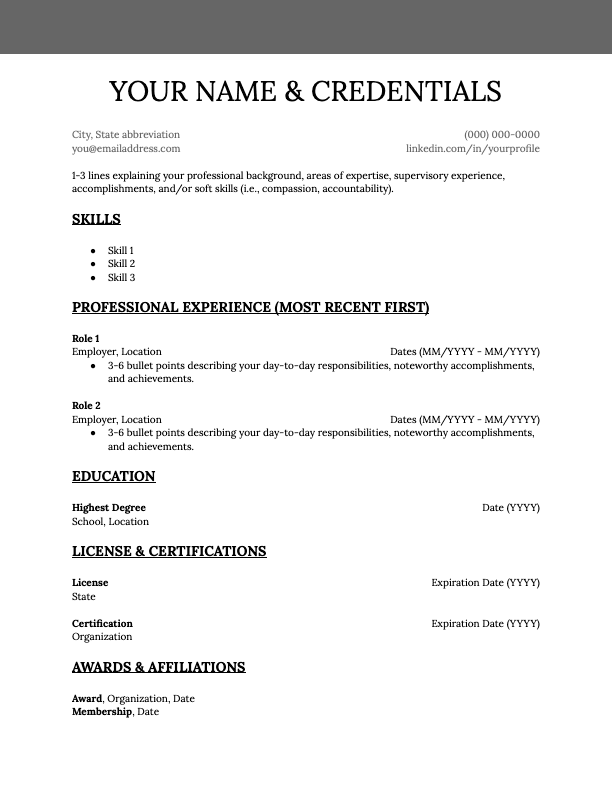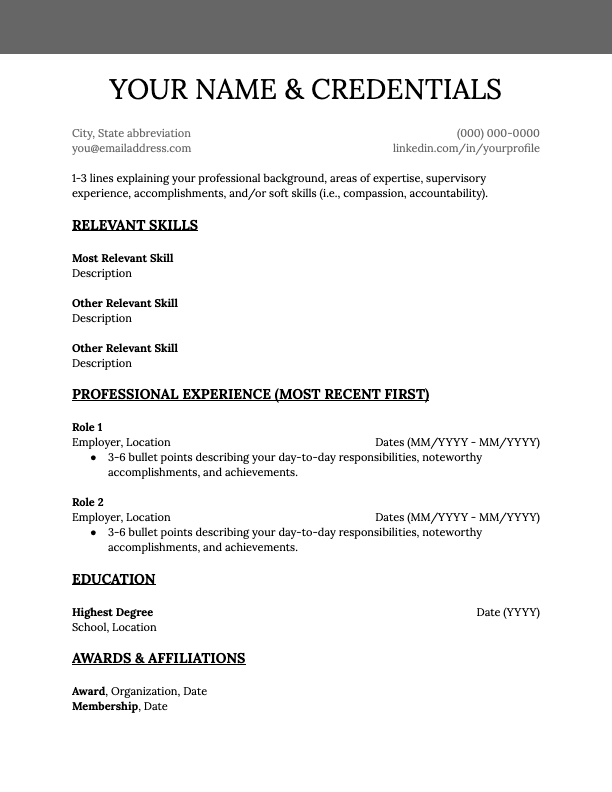
How can you make your nursing resume stand out? Learn how to craft a distinct resume and see other resume writing tips for nurses.
ADVERTISEMENTAre you ready to earn your online nursing degree?

Even with nurses in high demand, you still need a great nursing resume to stand out from other applicants. A strong resume conveys your skills and experience and how they fit an employer’s needs.
Learn to make the best possible impression through this collection of resume writing tips for nurses.
These tips on writing a powerful nursing resume can help you stand out in a crowded pool of applicants. Recruiters spend an average of seven seconds on each resume, and you can make those seconds count for you.
Writing an effective nursing resume requires taking your prospective employer’s applicant requirements into careful consideration. Every hospital operates with its own culture and philosophy. Consult the organization’s website and social media presence to get an idea of what their goals and points of emphasis are. This shows the employer you understand their workplace and will allow you to communicate how you can help them achieve their goals.
Specificity can boost a resume. For example, while both positions require a great deal of stamina, a nursing home nurse does not fulfill the same responsibilities as an urgent care nurse. By framing professional experience through a personal lens, your resume stands out among the others.
What conditions or diseases do you treat? What types of medication can you administer and how? How about types of therapy and equipment you specialize in?
When describing duties, use action verbs (supervised, administered, collaborated) and positive adjectives (resilient, compassionate, observant) that reflect your dedication to patient care and organizational success. Quantify your impact by describing how you improved patient outcomes or organizational efficiency.
Remember that useful specificity is the goal. Instead of attaching a vaguely titled document, name your nursing resume so that employers can easily distinguish and retrieve it, such as “Firstlast_specialty_resume.doc.” Be sure to check your document’s metadata and edit it appropriately.
Although interesting fonts and attractive colors can make a nursing resume appear more interesting, they can also detract from the information. Employers may also perceive excessive formatting as an overcompensation for lack of qualifications.
You should strive for accessibility through logical placement and uniformity. Start with the most important information and make it the most conspicuous.
Employers recognize you cannot fit all your credentials and qualifications into a resume without it becoming incomprehensible. A cover letter offers you the chance to discuss your skills and achievements in greater detail. This is also a good place to describe how you would be a good cultural fit with the organization.
Nurses, particularly those with less than 10 years of relevant professional experience, do not need more than one page to respond to a job listing. Abstain from wordiness, relying instead on economical usage of resume structure, including margin manipulations and concise usage of action-oriented descriptions.
These tips can help make your nursing resume easy to read, especially for a busy recruiter. As you take these resume writing tips into account, be sure to avoid common mistakes.
Because nursing requires attention to detail, mistakes on a nursing resume can leave a bad first impression. The following list includes some of these oversights.
Nursing resumes are typically chronological, functional, or a combination of the two. Which type you pick should depend on the job and the format that best demonstrates your skill set. For your first job, a functional or combination resume that lists your skills will likely be most effective, while chronological or combination resumes are better suited for jobs requiring experience.
A reverse chronological resume usually lists your most recent job first. If your most recent job is not relevant, then a functional resume may be better. This reverse chronological example for a nurse manager position shows both that the applicant holds the desired experience and that the applicant achieved important objectives. Similarly, this ER reverse chronological nursing resume example uses the kinds of key terms an automated review system may recognize.

This combination nursing resume for a new nurse starts by listing skills and credentials so that the employer first sees how your training has prepared you. This method clarifies that you have some nursing experience, but allows the employer to first see your skill sets.
 Combination Resume Template" />
Combination Resume Template" />
This guide to writing a CNA resume provides examples of the types of skills you can use for a functional resume. This is especially valuable if your most recent position isn’t a good match for the one you’re applying for. Similarly, if you’ve worked multiple positions in a short period of time (for example, as a travel nurse), listing each individual position you’ve recently held would take up space without showing your value as well as a cumulative list of your skills would.

Featured Image: opolja / iStock / Getty Images Plus

Employers want nurses with experience, but it can be hard to get experience without a job. Here are 10 ways to get experience before the job.
Mar 24, 2023
Nursing school clinical experiences are necessary for students to graduate — but how do clinicals work in online nursing school? Read this guide to find out.
Oct 11, 2023
Interested in nursing but confused about how to enter the field? This guide will help you understand the various nursing career paths, educational requirements, financial aid, and job and salary outlook.
Feb 23, 2024
This guide details five soft skills for nurses that enable them to succeed in their careers and meet the AACN standards, along with methods for acquiring them and applying them in the workplace.
Mar 22, 2023Whether you’re looking to get your pre-licensure degree or taking the next step in your career, the education you need could be more affordable than you think. Find the right nursing program for you.
Learn More About Our Partners
Nursing schools use entrance exams to make admissions decisions. Learn about the differences between the HESI vs. TEAS exams.